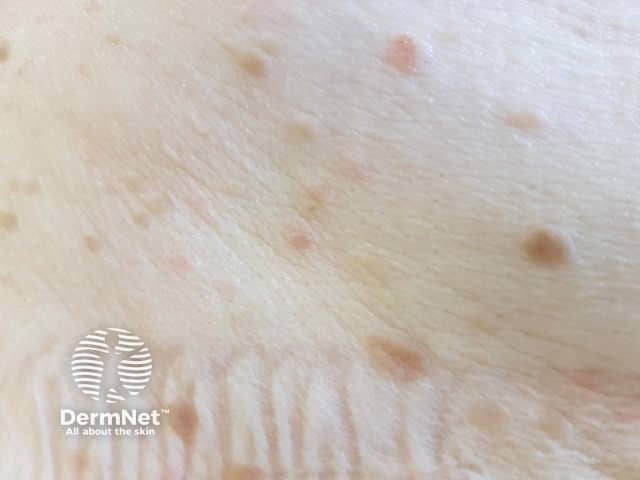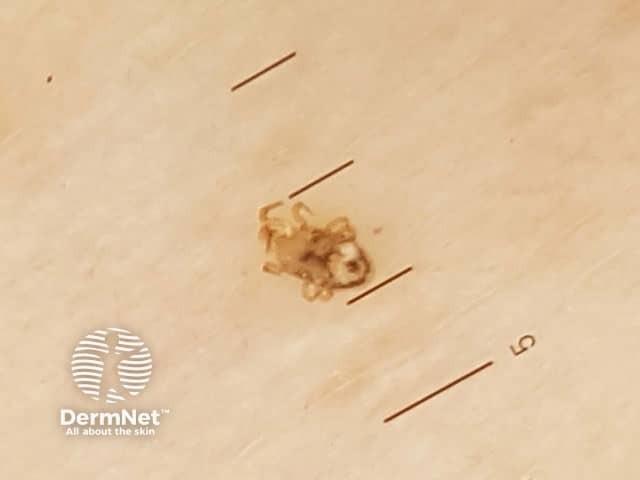Main menu
Common skin conditions

NEWS
Join DermNet PRO
Read more
Quick links
Author: Dr Cheng Huang, Dermatology Registrar, Waikato Hospital, Hamilton, New Zealand. DermNet Editor in Chief: Adjunct A/Prof Amanda Oakley, Dermatologist, Hamilton, New Zealand. Copy edited by Joanne Petrie/Gus Mitchell/Maria McGivern. September 2018.
Introduction - bird mites Bird mite locations Introduction Demographics Clinical features Complications Diagnosis Differential diagnoses Treatment Prevention Outcome
Bird mites are minute (< 1 mm long), oval-shaped arachnids with eight legs. There are several species of bird mite. The most common species that affect humans in Australia are the domestic starling mite, Ornithonyssus bursa, from the family Macronyssidae, and the red poultry mite Dermanyssus gallinae, from the family Dermanyssidae.

Bites

Dermanyssus gallinae
Bird mites are naturally found where birds, such as poultry, sparrows, starlings, or pigeons, and their nests are located. Bird mites prefer warm and humid living conditions and are most active during the spring and early summer.
Bird mites normally feed on the blood of birds. After young birds leave their nests, the mites may encounter humans while searching for a new bird host. Bird mites can bite anywhere on the human body but are more often experienced on exposed skin.
Although they may feed on human blood, bird mites are not able to complete their life cycle on humans and they do not burrow beneath the skin.
People who are at high risk of bird-mite infestations include poultry farmers; people living in close proximity to bird nests; people who rear birds as a hobby (eg, pigeon racers, breeders, pet keepers, etc); vets, and zoo workers. Exposure to bird mites can also occur when using second-hand furniture, or when working/living in buildings that have been infested by bird mites.
A bird-mite infestation presents as itchy bites.
Complications of bird mite infestation may include:
The suspicion of bird-mite infestation should be raised when the patient presents with the symptoms and clinical features of scabies but is not responding to the apparently appropriate treatment. A detailed history should be taken, including considering the season and the time of day when symptoms occur, the patient’s occupation, hobbies, and living conditions.
Bird mites are too small to be seen without magnification. They can be collected with transparent adhesive tape and examined with a microscope. The identification of the species might require consultation with a specialist entomologist (a scientist who studies insects and arachnids).
Bird-mite infestation can be clinically difficult to distinguish from other mite and insect infestations, such as scabies, fleas, body lice, mosquitoes, sandflies, horse flies, spiders, centipedes, bed bugs, ticks, midges, and harvest mites. Unlike scabies mites, bird mites do not result in burrows in the skin.
Treatment involves identifying and eradicating the mites. The skin should be cleansed to remove any mites.
Bird-mite infestation can be prevented by removing bird nests located near living and working areas.
The bites should clear up after the bird mites are successfully eradicated.